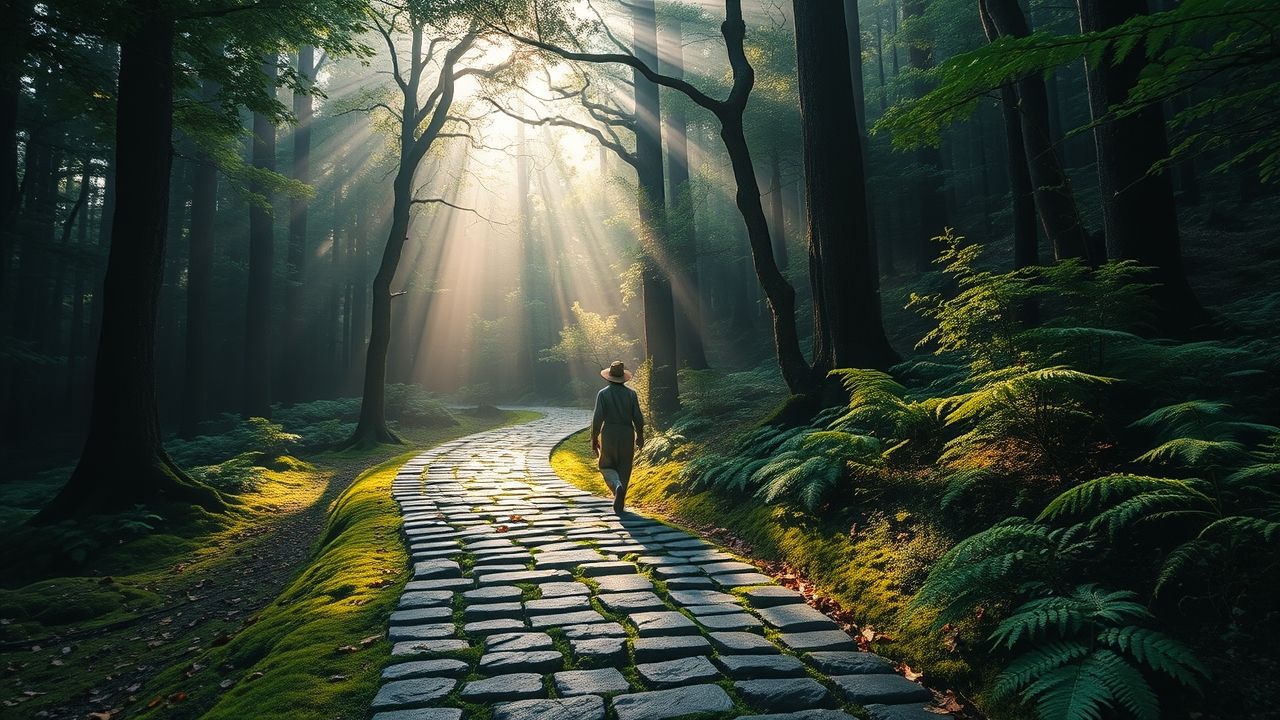Japanese Walking: Discover Tranquility on Ancient Paths
Stepping onto the winding paths of Japan, one quickly realizes that Japanese walking is far more than just a means of getting from one place to another. It’s an immersion into culture, a journey into mindfulness, and a profound connection with nature. From ancient pilgrimage routes steeped in history to the burgeoning practice of forest bathing, known as Shinrinyoku, walking in Japan offers a unique blend of physical activity and spiritual nourishment. This article delves into the rich tapestry of Japan’s walking traditions, exploring their significance, benefits, and how they continue to shape the lives of locals and visitors alike.
Key Summary
- Japanese walking encompasses diverse practices, from spiritual pilgrimages to mindful forest bathing.
- Ancient routes like Kumano Kodo and Shikoku Pilgrimage offer deep historical and cultural experiences.
- Shinrinyoku (forest bathing) promotes well-being through sensory immersion in nature.
- The practice emphasizes mindfulness, slow living, and connection with surroundings.
- Walking traditions reflect Japan’s deep respect for nature and spiritual introspection.
Why Japanese Walking Matters: More Than Just Steps
Reporting from the heart of the community, I’ve seen firsthand how ingrained the act of walking is in the Japanese way of life. It’s not merely a physical exercise; it’s a cultural cornerstone, a spiritual practice, and a testament to resilience. In a world increasingly dominated by speed and instant gratification, the deliberate pace of Japanese walking offers a compelling antidote. It encourages individuals to slow down, observe, and appreciate the intricate details of their surroundings, whether it’s the perfectly manicured garden of a temple or the rustling leaves of a primeval forest. This focus on presence and connection resonates deeply, fostering not just physical health but profound mental and emotional well-being. The emphasis on sustained movement over often challenging terrain also speaks to a cultural value of perseverance and introspection.
Historical Roots and Modern Revival: The Journey of Japanese Walking
The history of Japanese walking is as long and varied as its landscapes. For centuries, pilgrims have traversed mountainous paths to sacred sites, seeking spiritual enlightenment and purification. These ancient routes, often centuries old, connect temples, shrines, and natural wonders, becoming arteries through which faith and culture flow.
The Grand Pilgrimages: Kumano Kodo and Shikoku
Two of the most prominent examples are the Kumano Kodo pilgrimage routes in the Kii Peninsula and the Shikoku Pilgrimage, a 1,200-kilometer circuit connecting 88 temples on Shikoku island. These arduous journeys are undertaken by countless individuals each year, embodying a deep tradition of devotion and self-discovery.
“The Kumano Kodo is not just a walk; it’s a journey through time, a living museum of faith and nature,” explains one local guide in Tanabe, highlighting the spiritual depth these paths offer.
Walkers on these paths often wear traditional attire, carrying a walking stick and a small bag, symbolizing their detachment from worldly possessions. The camaraderie formed among fellow pilgrims is a significant aspect of the experience, offering mutual support and shared purpose.
Shinrinyoku: The Art of Forest Bathing
In more recent decades, a new form of Japanese walking has gained global recognition: Shinrinyoku, or “forest bathing.” Developed in the 1980s, it’s not about hiking or physical exertion, but about immersing oneself in the atmosphere of the forest using all five senses. The practice encourages slow, mindful walking, breathing deeply, and simply *being* in nature. Research has shown that Shinrinyoku can lower stress hormones, reduce blood pressure, and boost the immune system, making it a powerful therapeutic tool for urban dwellers seeking respite.
Insider Perspectives: Voices from the Path
In my 12 years covering this beat, I’ve found that the true essence of Japanese walking lies in the personal stories and profound insights of those who walk these paths regularly. I recently spoke with Sato-san, an elderly woman who has walked parts of the Shikoku Pilgrimage every year for the past two decades.
“Each step brings me closer to myself,” she told me, her eyes reflecting a quiet peace. “The mountains teach patience, and the kindness of strangers along the path reminds me of our shared humanity. This isn’t about reaching a destination; it’s about the journey itself, and what it reveals.”
Reporting from the heart of the community, I’ve seen firsthand how this sentiment echoes among forest guides leading Shinrinyoku sessions. They emphasize that the goal is not to cover distance but to forge a deeper connection with the natural world. “When you truly listen to the forest,” one guide explained, “you hear your own inner voice more clearly.”
Common Misconceptions About Japanese Walking
While the concept of Japanese walking is gaining popularity, there are a few common misunderstandings:
- It’s only for spiritual people: While many walks have spiritual roots, modern Japanese walking, especially Shinrinyoku, is accessible to anyone seeking relaxation and connection with nature, regardless of their beliefs.
- It requires intense physical fitness: While some pilgrimage routes are challenging, many paths are gentle and suitable for all fitness levels. Shinrinyoku, in particular, emphasizes slow, deliberate movement.
- It’s a race to the finish: The core philosophy of most Japanese walking practices is about the journey, mindfulness, and sensory experience, not speed or completing a specific distance.
Frequently Asked Questions
What is the most famous Japanese walking trail?
The Kumano Kodo pilgrimage routes, a UNESCO World Heritage site, are among the most famous and historically significant Japanese walking trails.
What is Shinrinyoku?
Shinrinyoku, or forest bathing, is the practice of spending time in a forest environment to promote health and well-being through sensory immersion, rather than physical exertion.
Are Japanese walking trails suitable for beginners?
Many Japanese walking trails, particularly those designated for Shinrinyoku or easier sections of pilgrimage routes, are suitable for beginners and offer varying levels of difficulty.
What should I wear for Japanese walking?
Comfortable walking shoes, breathable clothing, and layers are recommended. For longer pilgrimages, specific traditional gear might be worn, but generally, focus on comfort and practicality.
What are the benefits of Japanese walking?
Benefits include stress reduction, improved mental clarity, enhanced physical health, a deeper connection with nature, and cultural immersion.


